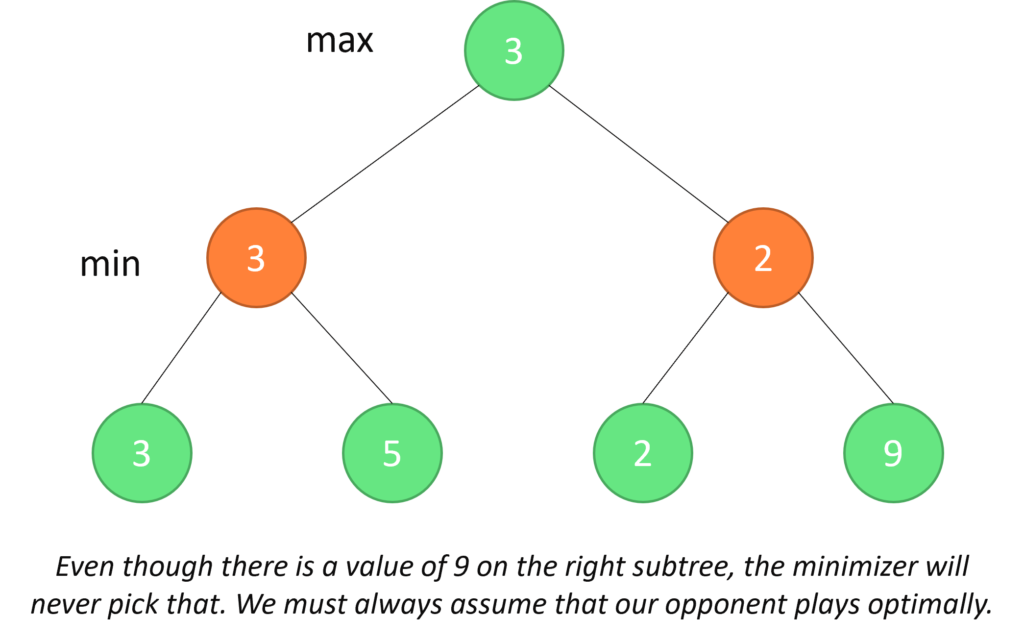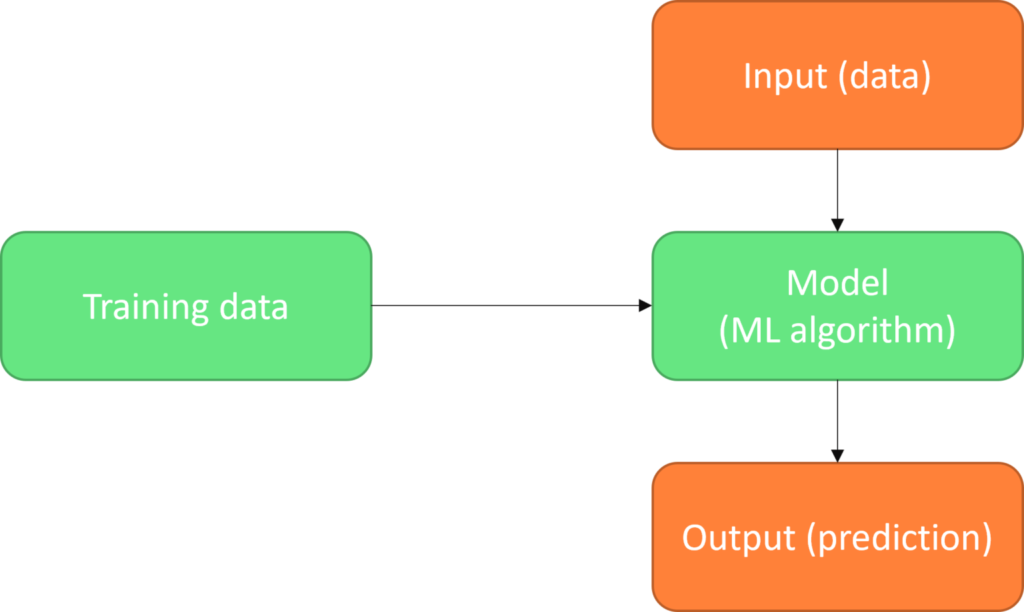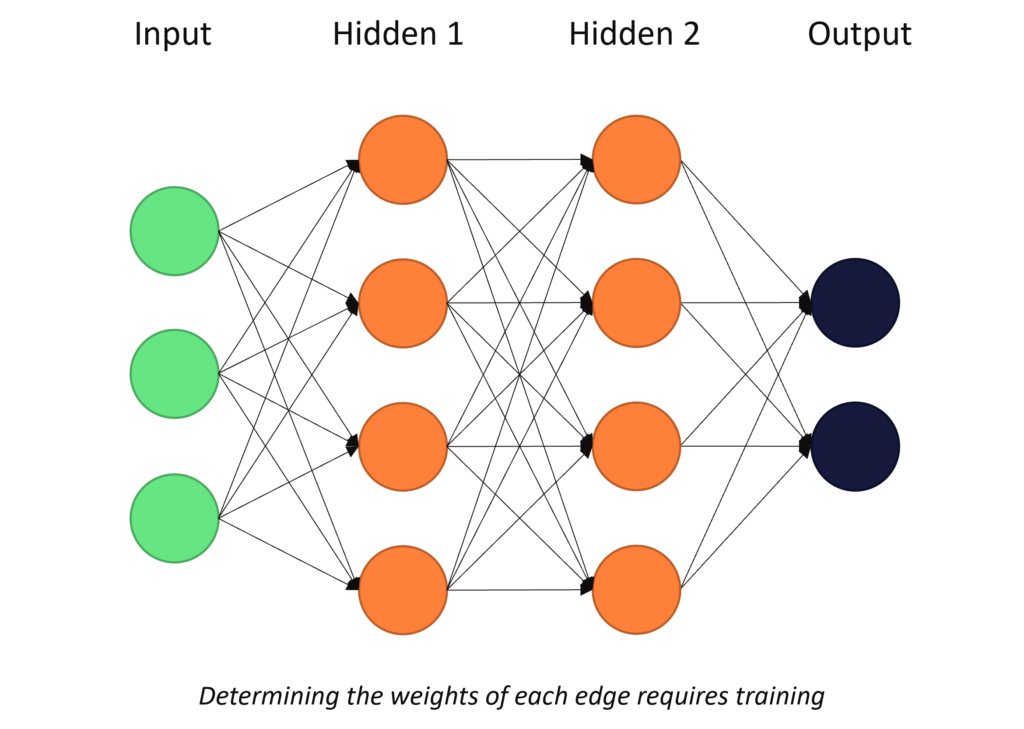ChatGPT is taking over the world. Or at least, it writes the majority of (fake) news and social media posts. ChatGPT is one of the largest and most powerful language processing Artificial Intelligence (AI) models today. But what exactly is AI? And what is Machinea Learning? And how about Neural Networks? In this blog I will outline the different notions and their relationships.
Artificial Intelligence
Artificial Intelligence encompasses the entire field of creating programs with the abililty to reason and learn like humans. It goes back to 1965 where the term was introduced in an attempt to model how the human brain works in order to create more advanced computers. In a sense, all algorithms aimed at problem-solving, can be considered a form of AI. All algorithms for automated game-playing and planning and scheduling can be considered AI. Examples include Minmax and Alpha-beta pruning.
Minmax example
Minmax is a decision rule, used for AI and game playing, to minimize possible loss. Suppose a game being played has a maximum of two possible moves per player each turn. The algorithm generates a tree, where the circles represent the moves of the player running the algorithm (maximizing player), and squares represent the moves of the opponent (minimizing player). Because of limited computation resources the tree is limited to look ahead 2 moves. The algorithm evaluates the value of every leaf node using some (heuristic) scoring function. The moves where the maximizing player is likely to win are assigned a positive value, while the moves that (may) lead to a win of the minimizing player are assigned a negative value. The level above, the algorithm will select the smallest (minimum) value that represents the best move of the opponent – that strives for the lowest value. The level above, the algorithm will select the highest (maximum) value that represents the best move of the current player – that strives for the highest level. This conforms to a perfect play, in which each player does the ‘optimal’ move. This alternation of minimization and maximization continues to the highest level, in which a value is assigned to a certain move or state.

When minmax is used with a depth large enough, it becomes close to perfect or optimal play. Alpha-beta pruning is a variant that makes minmax perform (a little) better. Minmax is an example of a (runtime) brute-force approach to create an optimal game bot, that does however need an evaluation or scoring function. The correctness of the scoring function is crucial for the correctness of the algorithm. For real-time gaming, one has to balance performance (low search depth) and correctness (high search depth).
Machine Learning
Machine Learning (ML) is the set of algorithms that possess the ability to learn without being explicitly programmed. There are two important aspects in the previous sentence:
- the ability to learn: in contrast to all AI, ML algorithms are not just decision algorithms, such as minmax. ML algorithms have the ability to learn (from new data).
- without being explicitly programmed: in contrast to other AI, such as minmax, ML algorithms are not explicitly programmed but derived through learning. ML has the ability to infer (or: guess) a decision based on existing data. The algorithm to compute an outcome is not a pre-defined algorithm.

Several sub types of ML exist, including supervised, semi-supervised, unsupervised, and reinforcement learning. All variants need a (big) data set with assigned features to train the algorithm. If chosen well, the algorithm can then make predictions for new data entries, based on its features. An example of ML is image recognition, to decide whether an image contains a dog or not.
Neural Networks
Neural Networks (NN), or Artificial Neural Networks, are a computing system inspired by the biological neural network, also known as human brain. It is a subset of ML, and consists of:
- One input layer that contains feature values of a data sample (incl. documents and images);
- One or more hidden layers of ‘neurons’. Each hidden layer connects to the previous and next layer by weights;
- One output layer that contains the desired or calculated outcome.

Together this makes up a directed, weighted graph. It is trained by feeding sample data in several iterations. In each iteration the weights of the nodes are adapted until the error is small enough. These computations are all basic matrix computations and this model is the core of most AI and ML currently.
Deep Learning
Deep Learning (DL) is the subset of AI that uses complex multi-layered neural networks. The difference with ‘normal’ neural networks is that the level of abstraction increases gradually by non-linear transformations of input data that takes into consideration a huge number of parameters. In order to train such neural networks, you will need huge amounts of training data in order for the solution to be accurate. In fact, most image recognition software currently is based on deep learning.
Want to read more?
- https://serokell.io/blog/ai-ml-dl-difference
- https://www.dpaonthenet.net/article/195973/Will-ChatGPT-really-take-over-the-world-.aspx
- https://en.wikipedia.org/wiki/Artificial_intelligence
In a next blog I will show you how I created multiple AI’s for the popular Connect4 game in Mendix.

Comments (2)
This article offers a fascinating perspective on the subject. The depth of research and clarity in presentation make it a valuable read for anyone interested in this topic. It’s refreshing to see such well-articulated insights that not only inform but also provoke thoughtful discussion. I particularly appreciated the way the author connected various aspects to provide a comprehensive understanding. It’s clear that a lot of effort went into compiling this piece, and it certainly pays off. Looking forward to reading more from this author and hearing other readers’ thoughts. Keep up the excellent work!
Fantastic article! I appreciate how clearly you explained the topic. Your insights are both informative and thought-provoking. I’m curious about your thoughts on the future implications of this. How do you see this evolving over time? Looking forward to more discussions and perspectives from others. Thanks for sharing!